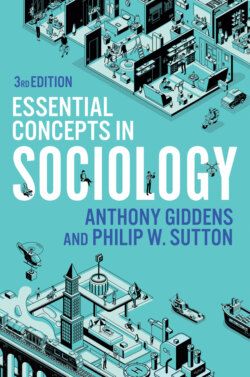Читать книгу Essential Concepts in Sociology - Anthony Giddens - Страница 52
Continuing Relevance
ОглавлениеIdeal types are still used in sociology, as is evident when new social phenomena emerge which sociologists do not fully understand. However, some sociologists return to Weber’s own work in order to extend it, fill in the gaps or take it in new directions. For instance, Załęski (2010) notes that Weber’s typology of religious attitudes towards the world is often ignored or downplayed in accounts of his work. And, in exploring its contemporary utility, he attempts to logically extend it.
Weber’s typology covers inner-worldly asceticism, world-rejecting asceticism and world-flying mysticism. Inner-worldly asceticism (such as Puritanism and Calvinism) involves striving ‘to make the world fulfil religious demands’ (Załęski 2010: 320), world-rejecting asceticism (Christian ascetics and anchorites) holds that the world is religiously worthless, leading to the rejection of what this world has to offer, while world-flying mysticism (in Buddhism and Brahmanism) occurs where followers use, say, meditation as a route to higher states of consciousness. Załęski introduces a fourth religious ideal type of world-active mysticism, such as animistic mysticism, voodoo rituals or the manipulation of spirits. And, though Weber did not regard this type as significant, Załęski sees it as actually very common today in the form of ‘new age’ beliefs and practices and beliefs in angels or demons and even extraterrestrials, all of which are thought to influence or shape real events in this world. Becoming involved in these kinds of mystical encounter allows people to feel that they actively ‘co-shape reality’.
